PART II: Geopolitical Application
It is now time to segue into the geopolitical applications of the RCSP. This section will begin with Northeast Asia and then proceed counterclockwise into exploring the dual approaches towards Central Asia, South Asia, and Southeast Asia. It will then move on to Europe before looking at the Mideast/North Africa (MENA) and Latin America. It is only in Africa where the RCSP has yet to mature, although the possibilities most certainly are there for China to invite Russia’s balancing influence into the continent in the future and to influence regional leaders to expand their trade ties with Moscow. Finally, the conclusion will unify the article and demonstrate that the RCSP is truly the most important relationship of the 21st century and the definitive vehicle for multipolarity.
The reader is recommended to keep the following in mind while perusing this section: Each hand of the RCSP is intended to wash the other and complement its counterpart in regions/states where it may be at a relative disadvantage vis-à-vis its partner, with the end-game intent of establishing true global multipolarity. With that being stated, the geopolitical examination of the RCSP begins.
Northeast Asia
The essence of the RCSP in Northeast Asia is to carefully confront the US’ “unsinkable aircraft carrier” and neutralize its lethality. Both Russia and China had existing territorial disputes with Japan prior to the commencement of the RCSP, but Japan did not begin to aggravate these tensions until the early 2010s. The Japanese problem could more accurately be viewed as an American problem due to its occupation of and mutual security with the country, so via proxy, the RCSP is effectively faced with the hurdle of American obstruction over the process of Northeast Asian pacification. Tokyo always has the ‘opt-out clause’ of a normalization of ties with Moscow (which is in the national interests of both actors), but this does not seem to be on the horizon under Abe’s administration. The US occupation is too strong and influential for the country to break free in the near future, but should a stroke of luck occur breakout and movement towards true foreign policy independence transpire, it would place Moscow in a position to play a positive role in moderating Tokyo’s actions towards Beijing.
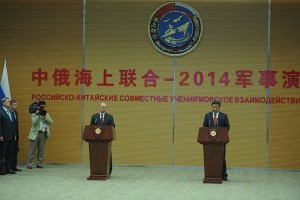
In the current environment, however, both Russia and China understand that Japan, not North Korea (which both countries engage in the multilateral de-nuclearization talks), poses the strongest risk of Northeast Asian destabilization due to its aggressive pursuit of territorial claims. This is aided and abetted by the US in order to create the optimal Lead From Behind partner in the region and sabotage the prospect of pan-regional cooperation. Thus, however unlikely it may seem at the moment, in the event that war breaks out, Russia and China could either military cooperate or one or the other would use the strongest diplomatic and political tools at its disposal to try to influence Japan to back down and halt hostilities as soon as possible.
Central Asia
A lot has been written about a supposed Russian-Chinese rivalry in Central Asia, but in actuality, this is not the case, and it is nothing more than wishful thinking by those intending to split up the RCSP and see Russia and China butting heads over the region. Russia is in the process of politically and economically integrating with Kazakhstan and soon Kyrgyzstan under the auspices of the Eurasian Union, and it has mutual security commitments with Kazakhstan, Kyrgyzstan, and Tajikistan under the CSTO (which also regularly partake in military drills). China, on the other hand, is more of a soft leader in Central Asia, having established lucrative business contacts in recent years and struck extremely strategic energy deals with most of the region’s members, first and foremost Turkmenistan.
The state of play in Central Asia is the following: Russia is consolidating its influence over the former Soviet sphere with states which it already has cultivated deep relations with, while China is moving in to fill the void in certain economic vectors. It is of the highest importance for China to be able to diversify its natural resource import routes in order to avoid the US-occupied and chokehold-prone Straits of Malacca, ergo its energy interest in Central Asia. It is through Russia’s implicit acceptance of China’s involvement here via the RCSP that it is able to proceed without a hitch, as it is also in Russia’s interest to have a strong and as energy independent as possible partner in China.
The meteoric expansion of China’s energy influence in Central Asia is also beneficial for Russia in a tangential way, however. The ties that it has fostered with Uzbekistan, which in the past few years has been moving away from Russia (it left the CSTO in 2012 and has plans to buy loads of NATO’s leftover military equipment from Afghanistan) and closer to becoming the US’ possible Lead From Behind partner post-Afghan withdraw, could be used to temper its regional policies. It is not to say that China can convince it to abstain from increased military cooperation with the US, but instead, it can exercise its impactful economic and energy influence over Uzbekistan to try to stave off a catastrophic military confrontation with Tajikistan that would likely involve Russia through its CSTO responsibilities.
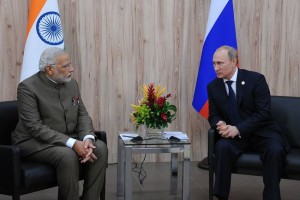
South Asia
This is a region of the world where the RCSP takes on a very complex nature and can be exceedingly difficult to discern except for the most careful of observers. To lay out the political arrangements, Russia is India’s closest ally, with new Prime Minister Nahrendra Modi having recently proclaimed that “If you ask anyone among the more than one billion people living in India who is our country’s greatest friend, every person, every child knows that it is Russia. Everyone knows that Russia has always stood side by side with India during the toughest moments and without demanding anything in return.” This is a political relationship imbued with titanic global implications in its own right, but in the context of the RCSP, it allows Russia to exert a strong degree of influence over India in keeping the peace with China, especially as the latter has ratcheted up its border dispute rhetoric over the past couple years in an ironically similar style to what Japan has done to China. Unlike Japan, however, China indicated two months ago that it is willing to finally settle this dispute, thereby opening the role for Russia to play a behind-the-scenes stabilizing hand to make sure that neither party acts recklessly and endangers the talks.
Moving along, China has a very close strategic relationship with Pakistan, India’s mortal rival, and the two countries interact on a military and economic basis. China is interested in an energy conduit to the Indian Ocean that is firmly under its control, and Pakistan needs its larger northern neighbor to hedge against the Indian threat. This relationship obviously threatens India and sits atop the foreign policy considerations of the nation’s diplomatic elite, as does China’s String of Pearls naval strategy in the Indian Ocean. This is the name given to China’s policy of establishing preferential naval relationships with Pakistan, Sri Lanka, Bangladesh, and Myanmar to increase its reach in India’s backyard and secure its energy shipments through the region. With so much geopolitical rivalry ongoing between India and China, Russia’s role over both actors takes on critical importance in securing peace and stability, and unlike in Northeast Asia and with Japan, in South Asia, Russia runs the high probability of being able to influence the course of events to a greater and more impactful extent.
Continuing along with China’s String of Pearls strategy, this also opens up doors of opportunity for Russia as well. Due to Beijing’s relationship with Islamabad and the political sensitivities of weapons shipments to its partner, Russia was able to go in by proxy and sell combat helicopters under the pretense of anti-drug assistance to Pakistan. Although irking India, this is represents a “paradigm shift” in more ways than one: not only are Russia and Pakistan both snubbing the West, but Russia is able to use the trust it has with India to engender (however begrudging) Indian acceptance of this new military-customer relationship. This sale helps Pakistan as much as it helps China to balance against India by proxy (no matter how minor), and it also indirectly assists Russia with the post-2014 withdraw situation in Afghanistan. This monumental development was entirely due to Russia’s intercession, as should China have sold similar equipment to Pakistan, it could have preceded a crisis in bilateral relations with India and scuttled the possible talks on finalizing the border dispute between the two.
What’s more, on a tangential note, Russia could in the future use China’s preferential trade ties with its String of Pearls partners to assist with the economic diversification of its agricultural products, a goal that it has embarked on since the counter-sanctions were enacted at the beginning of August. This would merely be reciprocation for what Russia allowed China to do in Central Asia with its energy diversification, for example, so it makes sense within the structure of the RCSP for China to lend a helping hand to Russia to do this for its agricultural and low-level trade diversification in South Asia. As was underscored at the beginning of the second part of this article, Russia and China complementarily aid one another in all possible ways, as this is the backbone of the strategic partnership. If one of them can open the front door to cooperation with a certain state or region for its own benefit, then they will let the other in through that entrance as well, if not through the backdoor which is away from public scrutiny.
Southeast Asia
This region of the world is one of the weakest for the RCSP but it still has an opportunity for both states. China is currently embroiled in a bitter spat with its neighbors over claims in the South China Sea, particularly with Vietnam. It is here where the opportunity is present for Russia to fulfill the strategic balancer role and work towards furthering the grand partnership with China. Russia and Vietnam have a long and friendly relationship stretching back to the Soviet era, and Moscow currently supplies Hanoi with valuable submarines that have given it a relative peace of mind against China. Although not as fierce, the Chinese-Vietnamese rivalry in Southeast Asia can be somewhat structurally compared to the Indian-Pakistani one in South Asia, and in both instances, Russia can be the mediator in balancing between both due to its unique position.
It is ironic that the Russian-Vietnamese relationship, built during the Cold War to counter China, can now be used to help Beijing in a convoluted way. Russia and China, as mentioned before, need each other to remain strong and stable in order to achieve the long-term goal of global multipolarity, so thus, Russia’s weapons shipments to Vietnam should not be seen as trying to weaken China, but rather, to anchor Moscow’s influence in a country that has already proven troublesome for Beijing. Through this deepening influence, Russia can then affect the decisions of the Vietnamese political elite in working towards a constructive (or at the least, non-military) solution, even if this results in a ‘frozen conflict’ or prolongation of the current stalemate. Of course, there are other actors influencing Vietnam as well (notably the US), but Russian influence in Hanoi should not be underestimated, as both countries are even talking about enhanced economic cooperation within the Eurasian Union format, thereby showing that the Russia factor still holds weight in the Vietnamese capital.
In light of the current tailspin in Russian-EU relations, there is practically nothing that Russia can do within the RCSP to help China, but China can in fact offer an opportunity for Russia. As it stands, one of China’s grand strategic designs is to facilitate expedited trade with the EU via a three-pronged approach: the New Silk Road (both land and maritime components), the Eurasian Land Bridge, and the Northern Sea Route. The last two paths run directly through Russian territory, be it land or maritime, thereby increasing Russia’s geopolitical prominence between Europe and China, whether the EU likes it or not. It doesn’t matter whether Europe reciprocates by transporting its goods through Russian territory or not since China is still highly forecasted to do so, which would still give Russia a stronger economic position and more tangible gains than it had before.
The Mideast and North Africa (MENA)
Ever since the 2011 Arab Spring Color Revolutions, MENA has been the focal point of intense Russian-Chinese political coordination. Sergei Lavrov declared in May 2011 after a meeting with the Chinese Foreign Minister that “We have agreed to coordinate our actions using the abilities of both states in order to assist the earliest stabilization and prevention of the further negative unpredictable consequences there.” This was in obvious response to the West’s violation of UNSC 1973, when the Security Council resolution was blatantly abused to justify the NATO War in Libya and subsequent regime change there. Clearly, Russia and China understand that such a violation can one day occur even closer to their borders, and if they are perhaps confronting internal destabilization and relative state weakening by that time, then even within these countries themselves.
In the Mideast, one can also easily see both countries fulfilling their specific roles within the partnership. Russia’s interactions with Syria and Iran, and most recently Egypt, visibly demonstrate its role as a military and political balancer. China has deeply involved itself in the energy trade in MENA, with 60% of its oil coming from there. It is also embedding itself into the region’s non-energy economy, specifically within the UAE. Thus, besides the overall political coordination and absolute agreement between Russia and China in MENA, the region also serves to lay plain the distributive roles between them.
Latin America
This region, more so than even MENA, unquestionably shows the RCSP active in near-laboratory conditions. Latin America is far removed from the geopolitical intrigues of Eurasia, thereby making Russia and China’s cooperation here easy even for the unaccustomed eye to observe. In the past decade, Russia has returned to Latin America both in style and in substance. Its ships have called port here and held joint exercises with Venezuela, and Russian bombers have flown over and refuelled there on occasion. Nicaragua is even supposed to host a Russian base to guard the Chinese-financed canal that is being built in the country. Gazprom has begun investing in Bolivia and Argentina, and Rosneft is active in Venezuela. Medvedev and Putin have even paid visits to the region, and it has been speculated that Russia agreed to reopen its Soviet-era spy base in Cuba during the latter’s last visit there in July. It can thus be argued that Russia is more influential in Latin America now than it ever was during the Cold War.
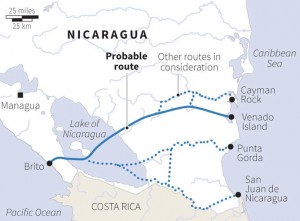
China, being the economic gateway that it is, is the fastest growing investor in Latin America and set to become its second-largest trading partner. As mentioned above, it is financing the revolutionary Nicaragua Canal, which will diversify trans-oceanic crossing away from the US’ Panamanian client state and invite more non-American investment and trade into the area. This is actually already happening even without the canal. Russia is capitalizing off of its past decade of re-established contact with Latin America to diversify its agricultural trade away from the West due to the recent counter-sanctions. This reveals a larger strategy on behalf of Russia, which is to break the West’s dominance on certain agricultural markets and provide producers with an attractive alternative option. Russia also wants to enhance its state sovereignty and thus has an impetus for lessening the West’s economic influence over its domestic economy, hence its trade expansion to non-Western markets in the past few weeks.
Altogether, Latin America is the most suitable rear base for advancing the Multipolar World in the backyard of the fading unipolar giant. Russia and China have absolutely no competing interests whatsoever in this theatre, thus unquestionably showing the grand strategic aims of the RCSP in general. Russian and Chinese involvement in the region is growing at a spectacular pace and in a multifaceted way, thus opening the possibility for a dramatic geopolitical transformation right on the doorsteps of the US. Latin America is in many ways to the US what Eastern Europe is to Russia – a region harboring intense dislike for its larger neighbor and therefore able to be flexibly managed from afar to partake in even more detrimental actions against its former hegemon.
Concluding Thoughts
The Russia-China Strategic Partnership (RCSP) is truly global in scope, having come to encompass the entire world to varying degrees. The axioms presented earlier must be restated in order to remind the reader of its essence:
Each hand of the RCSP is intended to wash the other and complement its counterpart in regions/states where it may be at a relative disadvantage vis-à-vis its partner, with the end-game intent of establishing true global multipolarity.
Russia is the Balancer and China is the Gateway. The further that one moves from these two, for example, to the Mideast and Latin America, the more they can see the pure multipolar objectives and close coordination between these states; likewise, the closer they get to these two Eurasian cores, the more complex the relationship appears and the more difficult it may be to understand.
With this always in mind, the RCSP is more easily grasped and its multipolar ambitions become more readily apparent. Returning back to the beginning of this composition where the detractors and distracters were mentioned, it is now shown that the distracters have been using smoke and mirrors to hide the obvious – the RCSP is a very real and tangible force all throughout the world. The detractors, on their end, were wrong when they alleged that this partnership is aggressive. It surely is challenging the Washington Consensus, but it is doing so through peaceful and political means, largely through the hand-in-hand approach of Russia’s military-diplomatic contacts and political balancing and China’s economic gateway role. Thus, it is indisputable that in the 21st century, the RCSP will continue to be the most dynamic partnership in constructing multipolarity all across the world and pushing back against the US’ desperate attempts to preserve its unipolar anachronism.
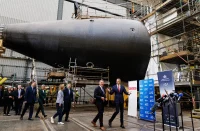
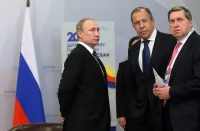
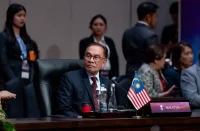
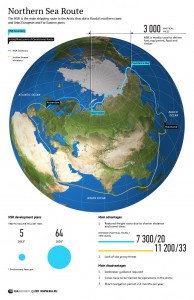











The US “is” rapidly losing its’ “unipolar anachronism”.
The racial discord fomenting in the US is the most immediate concern and we are one major incident away from social disintegration.
The RCSP is just one of many strategic economic opponents of
the US.
I suspect that our longest and closes allies are
questioning our foreign policies (lack of there-of) and back
channels developing strategies how to diplomatically distance themselves from America and create new alliances.
Our current foreign policy is to have our State Department Spokesperson tear off a piece of cardboard and write on it with a black marker …We Love You ?… take a selfie with their smart phone and broadcast it worldwide.
We reduced our nuclear arsenal by fifty percent, reduced financial
support to our military,changed our rules-of-engagement,etc., etc.
For a variety of reasons we have lost our most experienced senior
military officers and NCO’s and many of our seasoned diplomats
were sent out to pasture.
Back to the RCSP … we need to address the geopolitics of
rare earth elements.
ARTICLE:
China’s Ace in The Hole – Rare Earth Elements
Rare earth elements get limited exposure in the media.
However, it is a major concern in geopolitical circles and citizens should be made aware of the global situation.
The intent of this article is to disseminate non-technical information regarding the global dispute over rare earth elements — and instill in the general population the reality that the U.S. and other nations must support rare earth miners and vertical integration of the products.
Most citizens are unaware of the crucial importance of a nation’s
ability to ensure access to an uninterrupted supply chain of rare earths.
This grouping of 17 rare earth elements (on the periodic table) is critical to production in many industries. They are further subdivided into heavy and light rare earths.
The U.S. used to hold the dominant position in rare earth mining and metallurgy to produce the end products.
America lost the industry to China because of inability to compete with China’s low prices.
China now controls approximately 90-95% of the rare earth market.
The rest-of-the-world world (ROW) is reliant on China for production and distribution of the elements.
This gives China a big advantage — a gigantic geopolitical leverage.
The below is a list of “some of the uses/products” that require rare earth elements:
metallurgy & alloys, glass polishing, chemical catalysts, permanent magnets, phosphors,
compounds in batteries that power electric vehicles, cell phones, TV’s, cameras,
rechargeable batteries, night vision goggles, precision-guided weapons, communications
equipment, GPS equipment,batteries for a slew of defense electronics, aerospace components,
mercury-vapor lamps, microwave filters, energy efficient light bulbs, spark plugs, gas mantles,
additive to steel, fluid catalytic cracking catalyst for oil refineries, chemical oxidizing agent,
lasers, enamels, welding goggles, ceramic capacitors, nuclear batteries, neutron capture,
fluorescent lamps, x-ray tubes, computer memories, MRI contrast agent, magnetostrictive alloys,
spectrophotometers, fiber optic technology, vanadium steel, x-ray machines, stainless steel,
nuclear medicine ,microphones, fuel cells, nuclear reactor control rods, shielding in nuclear
reactors, nuclear marine propulsion, high temperature superconductors, integrated circuit manufacturing, cancer treatment drugs …. the list goes on and on and on.
Basically… all high technology items need these elements.
“If” we are unable to obtain them — then in a very short time period the normal functioning of our society, as we know it, will come to a screeching halt.
It will affect communications, banking, medical, utilities, military and national security operations.
There will be mass confusion and hysteria — our systems in the U.S. will become dysfunctional.
We will rapidly devolve into social disintegration.
The modern world has evolved to such technological heights that it has placed itself in a dilemma.
We have become over-reliant on technology to function on a
day-to-day basis.
How would your personal life be without computers, telecommunications or transportation?
Approximately five years ago China announced that it was going to restrict its’ rare earth exports.
This kicked over an anthill and “Heads of States” were sending envoys scampering all over the globe to secure a non-China supply chain of rare earths. There is not much out there in production.
The realization set in that the rest-of-the-world (ROW) had left itself vulnerable and at the mercy of China.
The leaders of industrialized nations got caught with their pants down and red faces.
They had traded their national security for China’s cheap labor and lack of environmental controls to supply them with the critically needed rare earths. They falsely assumed that this arrangement and supply would be everlasting.
This “crisis” stimulated the investment world and start up non-China rare earth miners found new financial avenues open to fund their projects. Those that have junior miners in their investment portfolio (like me) considered this a once in a life time investment opportunity.
The two major rare earth miners/vertical integrators coming online, at that time, were Molycorp in U.S. and Lynas in Australia. Both corporations eventually got up and running, but for a
variety of reasons ran into unexpected cash burn and share dilution. This resulted in losses for most of the institutional and retail investors that went for “high risk-high gain”.
These two non-China rare earth miners coming online did not put a dent in China’s dominance of the industry. There is a global scattering of non-China rare earth miners attempting to get in the market. However, if they succeed it will be a few years in the future
before they are in full operational mode.
The ROW desperately tried to correct their lack of foresight and in desperation took their case against China to the World Trade Organization (WTO) for dispute settlement.
The dispute resolutions went against China.
China then started using work-arounds such as the necessity for domestic stockpiling ,consolidation and regulatory constraints on their rare earth miners/processors, environmental
concerns and their attempt to eradicate illegal rare earth miners in China — to justify imposing taxes and fees on the exporting of rare earth.
The ROW challenged this as a violation of trade/tariff agreements and complaints were again filed with the WTO that China was unfairly using export taxes and quotas to restrict trade in rare earths. So… back to Geneva.
This resulted in more rounds at the WTO dispute resolution table.
Last week the WTO again ruled against China.
The U.S. trade representative was quoted, in Reuters, saying that this is the end of the dispute.
My opinion — the recent results of the China versus the WTO rare earth dispute is a pseudo-win.
If the U.S. Trade Representative actually stated – “this report makes the end of the line for this dispute…..”?
Then I think he is playing to the audience or is living a life of denial.
I am surprised that he did not tear off a piece of cardboard and write on it with a black marker — “We Love You China” — take a selfie and broadcast it worldwide.
That is the current U.S. administrations idea of a foreign policy strategy.
You can deny reality, but you cannot deny the consequences of reality.
The WTO/ROW is playing a game of checkers with the Chinese and all the while China is getting its’ “shits and giggles” as the actual game being played is Wei-ch’i.
I have mentioned numerous times, over several years that it does not make any difference how many laws, regulations, agreements that are put into place — if they are not complied with then they are useless.
China will find work-arounds and I suspect it will be domestic regulatory programs that will be passed down the rare earths supply chain as compliance costs.
Anyone who is a rare earth advocate knows that the solution is for individual nations to support and encourage REE mining and development to protect the continuity of their industries, military, national security. etc.
The USTR pounding his chest and spewing dialogue suggesting that the WTO decision is a victory for the U.S.?? — This is no time for hubris — He should be “sounding the alarm”
that it would only take a shift in the winds to create a major geopolitical event resulting in China shutting off the rare earth spigot.
That could easily be accomplished by China deciding to cancel its’ membership in the WTO.
China is already in the process of setting up bi-lateral trade agreements that trade in the currencies of the two participating countries.
Thus, bypassing international trade (SWIFT) transactions based in USD.
I anticipate a Chinese strategy that will move more aggressively against the U.S. dollar being the world’s reserve currency and an attempt to replace the petrodollar.
The Big Hammer and Sickle is in China’s hand.
If this happens, then those rare earth advocates out there trying to drive some sense into closed minds — will not take any solace in saying “I told you so” — it will be too late and we will enter the house of pain.
The Global leaders are not learning from their past mistakes.
“Learning is like rowing upstream, not to advance is to drop back” – Chinese Proverb
George Stewart
http://www.openeyesopinion.com
Pingback: Economic pressures - Page 15
Excellent analysis. The NWO will never win.
Americans need to deal with the unconstitutional government. The rest of the world will isolate American leaders. Obama will be lucky to survive.
One factor in the SE Asia equation which you omitted was China’s control of the headwaters of the Mekong River. With 21 dams planned, under construction or completed over the next 50 years, China controls a vital water tap to Myanmar, Laos, Thailand, Cambodia and Vietnam over both the supply of water for irrigation on which those countries’ farming depends and also the modification of the river for navigation into the upper reaches which would be a benefit (and provide a level of political indebtedness) to all nations.
Pingback: Washington’s Nightmare Comes True: The Russian-Chinese Strategic Partnership Goes Global (II) - PRN.fm - PRN.fm
Pingback: america's geopolitical ineptitude | Openeyesopinion.com
Pingback: Special meeting of the European Council – Conclusions : Ukraine, Gaza, Iraq, Syria, Libya, Ebola… | YERELCE
Pingback: 19. Washington’s Nightmare Comes True: The Russian-Chinese Strategic Partnership Goes Global (II) | Bibliografía Geopolítica y Globalización
Pingback: A seismic shift in globalpoltics is occurring. No dancing in the streets yet – but hope springs eternal in the human breast | The Liberty Beacon®™ England, Ireland, Scotland and Wales
Pingback: Emerging Eurasian alliance: a new power balance | Phil Ebersole's Blog
Pingback: Do the Trans-Siberian shuffle | Oriental Review
Pingback: Is the Value of Your Money About to Change? | japan casino legislation
Pingback: O Valor do Seu Dinheiro Está Prestes a Mudar ? | A Luz é invencivel
Pingback: O Valor do Seu Dinheiro Está Prestes a Mudar? – 13.11.2014 | Senhora de Sírius
Pingback: Andrew Korybko: Russian-Chinese Strategic Partnership Goes Global : Washington’s Nightmare — Oriental Review | Taking Sides
Pingback: Le cauchemar de Washington se précise: Le partenariat stratégique entre la Russie et la Chine s’étend | Arrêt sur Info
Pingback: The United States Is THE GLOBAL PARASITE – Is 2016 the Year?
Pingback: China Is Challenging The US In Central America, And Washington Can’t Do Anything | OrientalReview.org סין, מלחמות היברידיות, אמריקה הלטינית, ארצות הברית. סין
Pingback: Washington’s Nightmare Comes True: The Russian-Chinese Strategic Partnership Goes Global (II) – Qutnyti